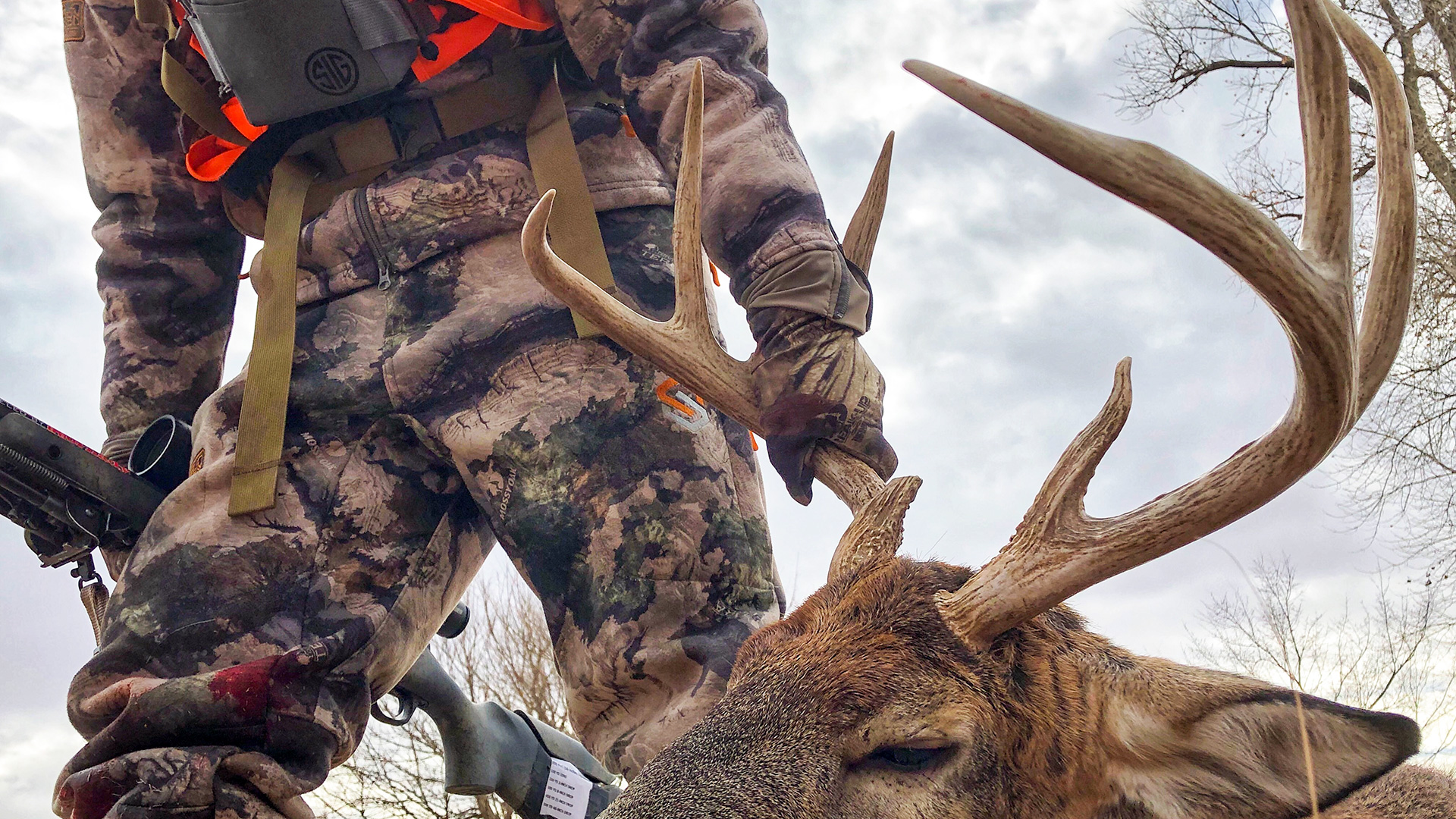
In most of America, November reigns as the rut month. The big question many of us ask is whether to hunt the opener or the closing days of the season. Opening-day sights of bustling hunting camps, predawn convenience store conventions and trucks parked at every field approach hint at what most of us choose.
Do not abandon the opening-day tradition, but if the opener falls flat or you cannot make the date, the ending days of November also offer rewards.

Thanksgiving, Black Friday and Burnt-Out Hunters
Depending on your hunting state, November hosts a firearm, muzzleloader or archery season for your participation. In states where the firearm season kicks off in the earlier half of the month, participation begins to slack off as November days drift toward December. One of these might describe you.
First, many of us relish the festivities of opening day. The gathering of hunting friends, good times and campfire talk ranks equally with the opportunity to bag a whitetail. Except for the retired crowd with leisure to hunt all season, most hunters need to set aside a few vacation days for deer season, and the opener receives most of our attention. Using that leave from work and possibly filling your tag erases any reason to return later in the season.
For those who hunt relentlessly with no “off” button, burnout can occur. As a hunting road warrior for more years than I care to recall, I know the meaning of hunting exhaustion. By the end of November, home begins to look rather good, even by a diehard hunter like me. When I end the last hunt, I usually pack up and drive all night just to sleep in my own bed.
Finally, November’s ending is marked by several big events. Thanksgiving tops the event calendar; travel stats substantiate it as the busiest travel holiday. I do admit to missing more than my fair share of Thanksgivings due to hunting obligations, but the average American does not.
Black Friday and Cyber Monday also draw hunters out of the field to participate in a shopping extravaganza. And let us not overlook the draw of the NFL. Who does not appreciate unbuttoning their pants in a recliner after a gluttonous hour at the turkey table to watch back-to-back abuse on the grid lines?
Sure, the woods have fewer deer in them due to hunters offering rides in their Coleman coolers, but late November offers more than the sight of fewer nimrods in the woods.

Hopeful Hookup
Empty stadium seats aid in your quest for a late-November whitetail, but do not forget the waning breeding season. Whitetails breed in just one period each year, unlike some species. Rising testosterone in October preps them for the November ritual. They sense when females reach estrus, and when the bulk of the female population has been bred. Regardless whether they panic, the search for one last hookup provides a ray of hope.
According to research from the Penn State College of Agricultural Sciences, more than 40 percent of the females are bred in the first two weeks of November alone. By the end of November, more than 85 percent of females have been bred. That leaves bucks searching to hook up with an increasingly smaller portion of the population. For reference, that population is basically fawns, although only a small population of fawns end up being bred.
Penn State data also reveal that during the rut whitetail bucks expand their territory by three to four times their early fall size. Depending on the character of a buck, those last days of breeding could bring on a surge of travel. My experience is that bucks in the 3½- to 5½-year range occasionally take late-rut road trips to find one last fling. Older bucks, the smaller portion of the buck population, tend to moderate travel with home territory on their mind.
On numerous late-November hunts I encountered these younger bucks crossing large expanses in a zombie breeding fashion. This period has also surprised me with the appearance of newcomers previously unseen. “Late” could lead to a roaming buck in your lap.
And despite forays by the young gentlemen in the group, nearly all bucks begin going back home to return to pre-rut patterns days away from December. A buck you lost during mid-November may suddenly reappear late in the month. This gradual settling down is another reason to consider a hunt later in November.

Who Turned Down the Heat?
By the time the majority of does are bred for the year, bucks have accomplished goals any Nutrisystem customer would gladly post on social media. Bucks typically lose between 20 and 25 percent of their body mass by the end of the rut. They cannot lose much more as it leads to death. Their skinny-jean lifestyle forces them to food. So do climatic conditions, especially in the north. The sun is tilted 47 degrees lower in winter and heading that way in November, thus heating decreases exponentially. And when added to days that barely offer nine hours of daylight, the frigid conditions prod deer to feed. Regrettably, whitetails, prodded by dropping testosterone and the need to conserve calories, begin to move less each day they do not find willing females.
Whether you reconnoiter native browse or monitor trail-camera images on a food plot, watch for buck patterns to reappear around food first. With a glint in their eye, they will still be sniffing for a final estrus female as they feed. Some of the craziest chases I have seen occurred during this time, including one epic buck battle where two mature bucks locked up over a doe in heat. Scents and decoys could trigger a close encounter.
Simultaneously, bucks hit the brakes and begin to forage in a build-back-better mode. Breeding could put their weight gain program on hold for a few hours, but every day that passes makes it imperative they recuperate before winter’s fury arrives.
Late November provides many bonuses that, if exploited strategically, provide you with a high chance of an encounter with a good buck before the action comes to a screeching halt. Some of my top bucks came over the long Thanksgiving weekend. There may be fewer bucks around, but odds are there are fewer hunters out as well, so make the best of a Thanksgiving tradition.



































